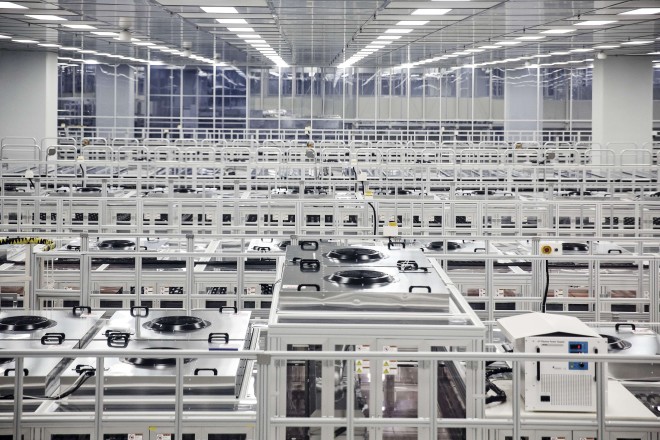
China is building an innovation ecosystem ripe for start-ups. Here’s how
The government is pumping funds into research, education and innovative projects, as Chinese tech firms flourish and investors and venture capitalists flock
[Brought to you by SCMP Events and Conferences]
With rising production costs, an ageing population and shrinking return on investments it is clear why China’s economy has shifted from labour-intensive manufacturing to an innovation-driven paradigm in just a few years.
Today, Huawei is the largest telecommunications equipment manufacturer in the world and JD.com, Tencent, Alibaba and Baidu are among the world’s top 10 internet companies in terms of revenue. These companies, and the new tech-based businesses seeking to emulate their success, have all benefited from the “innovation ecosystem” China is developing.
So what are the key elements that make up this ecosystem and have enabled China’s economy to rapidly climb the value chain?

Backing research and education
In 2018, China overtook Canada, Norway, Austria, New Zealand and Iceland to land in the top 20 ranked nations on the Global Innovation Index, published by the World Intellectual Property Organisation, Cornell University and INSEAD.
With education and research accounting for 12 of the 80 indicators calculated into the index, it’s clear that increased Chinese government funding in both those areas has had an impact.
Policy shifts have also narrowed the gap between academia and industry. Today universities are increasingly working with enterprises on joint projects, as well as launching their own start-ups.
Investing in innovation
China’s research and development spend – both in public and private sectors – rose 11.6 per cent year-on-year, to US$280 billion in 2017, according to the National Bureau of Statistics. And this upwards trend looks set to continue.
Last October, President Xi Jinping set out his commitments and goals for the country over the next five years. Among these was a pledge to support accelerated growth in advanced manufacturing, big data, innovation, consumption industries and for a green and low-carbon economy.
On the corporate side, meanwhile, an increasing number of companies have established engineering centres in China, and thousands of technology companies, incubators and accelerators are supporting the development of start-ups and small- and medium-sized enterprises.
Protecting intellectual property rights
Chinese firms have often been accused of ‘acquiring’ and copying intellectual property from overseas companies. However, with the economy’s position in the value chain rapidly evolving, regulations protecting and managing technological innovation and intellectual property rights (IPR) have been significantly strengthened.
In 2014, IPR courts were set up in Beijing, Shanghai and Guangzhou, and given power to adjudicate on civil and administrative cases concerning patents, new plant species, integrated circuit designs, protected technology and software.

Commercialising technology
The volume and potential sources of funding in China for innovation and entrepreneurship continue to grow and diversify.
Last year, half of the world’s top 10 venture capital deals involved Chinese telecoms and internet companies. Overall, China ranked second in the world for deal volumes, attracting US$65 billion, or 36 per cent of the total value. And in 2016, Chinese start-ups accounted for seven out of the top 10 venture capital deals.
Other beneficiaries of China’s innovation push are corporate R&D personnel and research institutes, which are likely to be granted IPR ownership. And the numbers involved in research aren’t small. By the end of 2015, according to the National Bureau of Statistics, China had 5.35 million people working in research and development.
Framing laws and policies
SMEs are widely recognised to be key players in any innovation ecosystem. So the fact that entrepreneurs consider a conducive regulatory framework – along with accessible markets and the availability of the necessary tech skills – as vital to the prospects of their enterprises is significant.
Among other changes in official policy, in 2015, the State Council issued its “Opinions on Several Policy Measures to Promote Mass Entrepreneurship and Innovation”. This statement of intent specified actions to be taken, including institutional innovation and optimisation of financial and tax policy.
[This article has been expressly commissioned for SCMP events and conferences. This is not an SCMP editorial product.]
